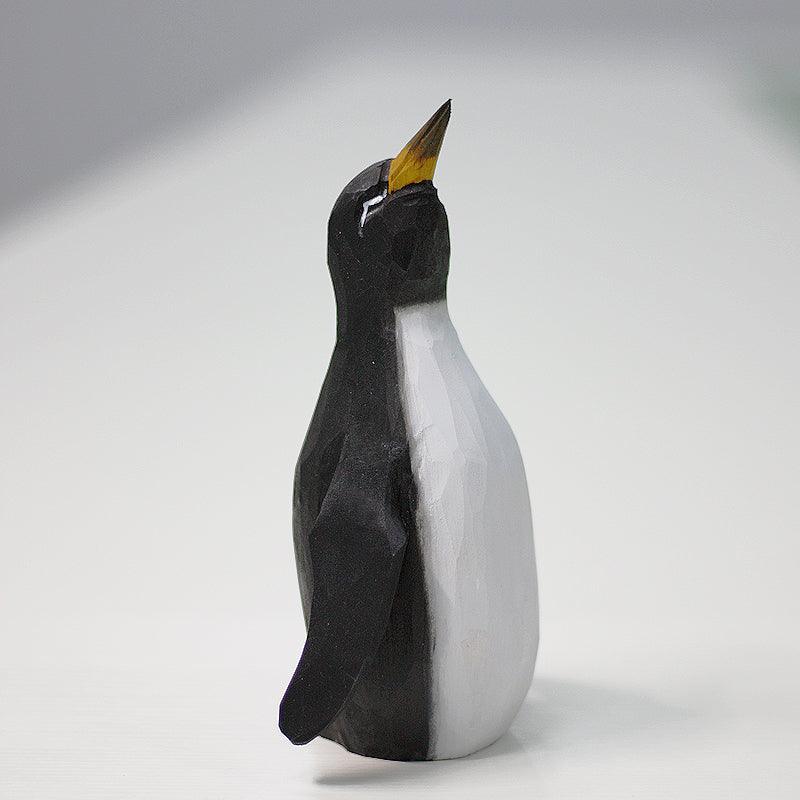
The Fascinating World of Penguins: Nature's Flightless Wonders
Share
Meet the Penguin
Penguins are among the most beloved and recognizable birds in the world, known for their distinctive black and white plumage, waddling gait, and remarkable swimming abilities. These flightless birds have adapted to some of the harshest environments on Earth, from the icy shores of Antarctica to the rocky coasts of South America. This blog explores the unique characteristics, behaviors, and significance of penguins in the natural world.
Adaptations to Extreme Environments
Penguins are marvels of adaptation, having evolved to thrive in environments where few other creatures can survive. Their thick layers of blubber and dense, waterproof feathers protect them from the freezing temperatures of the Antarctic waters. Penguins also have a special gland near their eyes that helps them excrete excess salt from the seawater they ingest, allowing them to survive in salty ocean habitats.
The penguin’s iconic black and white plumage serves as camouflage in the water, where they spend much of their time hunting for food. The black back blends with the dark ocean depths when viewed from above, while the white belly merges with the bright surface when seen from below, helping to protect them from predators like seals and sharks.
Penguins' Social Structure and Breeding
Penguins are highly social birds, often living in large colonies that can number in the thousands. These colonies provide protection from predators and harsh weather conditions. Within these colonies, penguins exhibit complex social behaviors, including vocalizations and physical displays that help them communicate with each other.
Breeding is a critical time for penguins, and they display remarkable dedication to their offspring. Most species of penguins mate for life, returning to the same breeding grounds year after year. The courtship rituals of penguins often involve elaborate displays, such as the Emperor Penguin’s unique trumpet-like call or the bowing and preening behaviors of the Adélie Penguin.
 Once a pair has bonded, the female typically lays one or two eggs, which are incubated by both parents. In some species, like the Emperor Penguin, the male takes on the primary role of incubation, keeping the egg warm on his feet under a flap of skin called a brood pouch. After hatching, the chicks are cared for by both parents until they are old enough to fend for themselves.
Once a pair has bonded, the female typically lays one or two eggs, which are incubated by both parents. In some species, like the Emperor Penguin, the male takes on the primary role of incubation, keeping the egg warm on his feet under a flap of skin called a brood pouch. After hatching, the chicks are cared for by both parents until they are old enough to fend for themselves.
Diet and Hunting Techniques
Penguins are carnivorous birds, primarily feeding on fish, squid, and krill. Their hunting techniques are highly adapted to their aquatic lifestyle. Penguins are exceptional swimmers, using their powerful flippers to propel themselves through the water at speeds of up to 15 miles per hour. Their streamlined bodies allow them to dive to great depths, sometimes over 500 feet, in search of prey.
Penguins often hunt in groups, working together to herd fish into tight schools, making them easier to catch. Their keen eyesight is crucial for spotting prey underwater, and their swift, agile movements make them efficient hunters.
The Importance of Penguins in Ecosystems
Penguins play a vital role in the ecosystems they inhabit. As predators, they help regulate populations of fish, squid, and krill, maintaining a balanced food web. Penguins also serve as prey for larger animals like seals, orcas, and skuas, contributing to the overall health and stability of marine ecosystems.
In addition to their ecological role, penguins are important indicators of ocean health. Changes in penguin populations can signal shifts in marine environments, such as alterations in sea temperature, ice cover, or food availability. Scientists often study penguin colonies to monitor the effects of climate change and other environmental pressures on the Antarctic and sub-Antarctic regions.
Penguins and Conservation Efforts
Despite their remarkable adaptations, many penguin species are facing significant threats due to climate change, overfishing, and habitat destruction. Warming temperatures are causing the loss of sea ice, which is crucial for penguins like the Emperor Penguin that rely on it for breeding. Overfishing is reducing the availability of key prey species, making it harder for penguins to find enough food to sustain their colonies.
Conservation efforts are underway to protect penguin habitats and ensure the survival of these incredible birds. These efforts include establishing marine protected areas, regulating fishing practices, and conducting research to better understand the impacts of environmental changes on penguin populations.
The Endearing and Resilient Penguin
Penguins are truly remarkable creatures, perfectly adapted to life in some of the world’s most extreme environments. Their unique behaviors, social structures, and vital ecological roles make them an essential part of the natural world. As we continue to learn more about these fascinating birds, it is crucial to protect their habitats and ensure that future generations can continue to marvel at the wonder of penguins in the wild.








